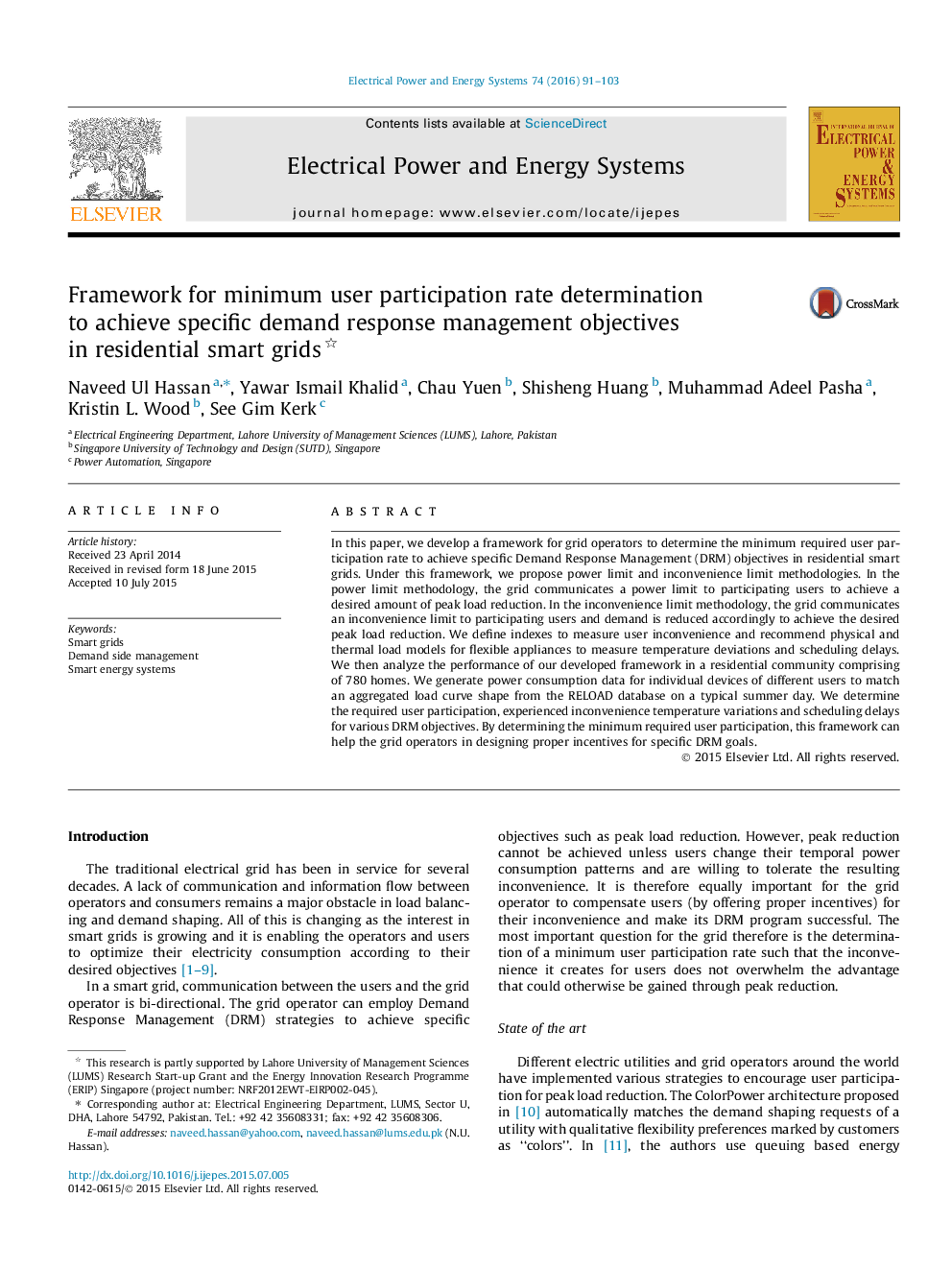| Article ID | Journal | Published Year | Pages | File Type |
|---|---|---|---|---|
| 6859598 | International Journal of Electrical Power & Energy Systems | 2016 | 13 Pages |
Abstract
In this paper, we develop a framework for grid operators to determine the minimum required user participation rate to achieve specific Demand Response Management (DRM) objectives in residential smart grids. Under this framework, we propose power limit and inconvenience limit methodologies. In the power limit methodology, the grid communicates a power limit to participating users to achieve a desired amount of peak load reduction. In the inconvenience limit methodology, the grid communicates an inconvenience limit to participating users and demand is reduced accordingly to achieve the desired peak load reduction. We define indexes to measure user inconvenience and recommend physical and thermal load models for flexible appliances to measure temperature deviations and scheduling delays. We then analyze the performance of our developed framework in a residential community comprising of 780 homes. We generate power consumption data for individual devices of different users to match an aggregated load curve shape from the RELOAD database on a typical summer day. We determine the required user participation, experienced inconvenience temperature variations and scheduling delays for various DRM objectives. By determining the minimum required user participation, this framework can help the grid operators in designing proper incentives for specific DRM goals.
Related Topics
Physical Sciences and Engineering
Computer Science
Artificial Intelligence
Authors
Naveed Ul Hassan, Yawar Ismail Khalid, Chau Yuen, Shisheng Huang, Muhammad Adeel Pasha, Kristin L. Wood, See Gim Kerk,
